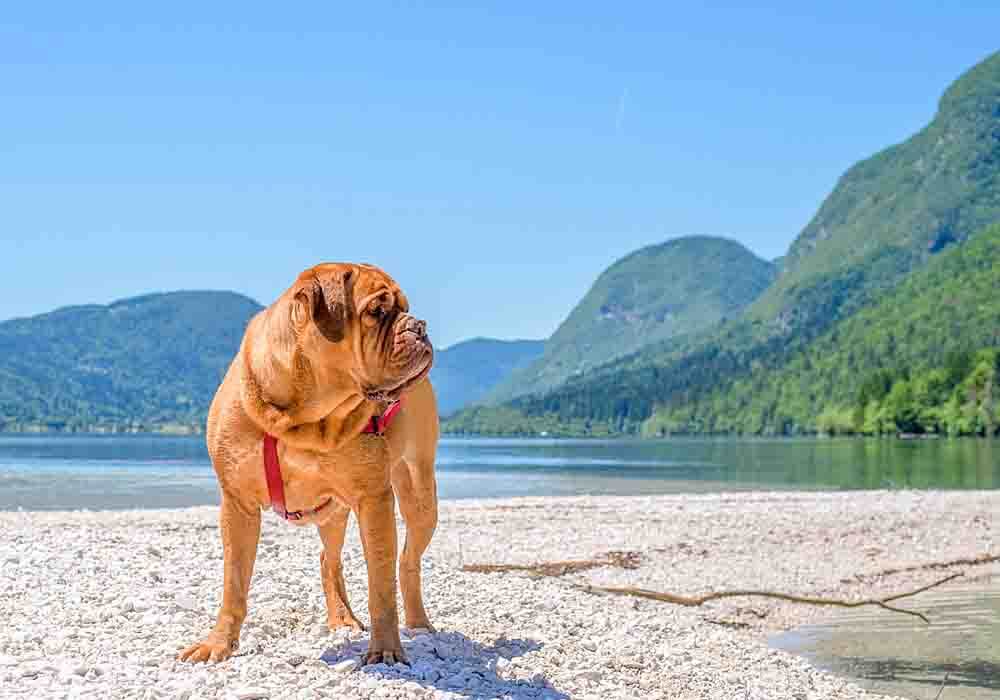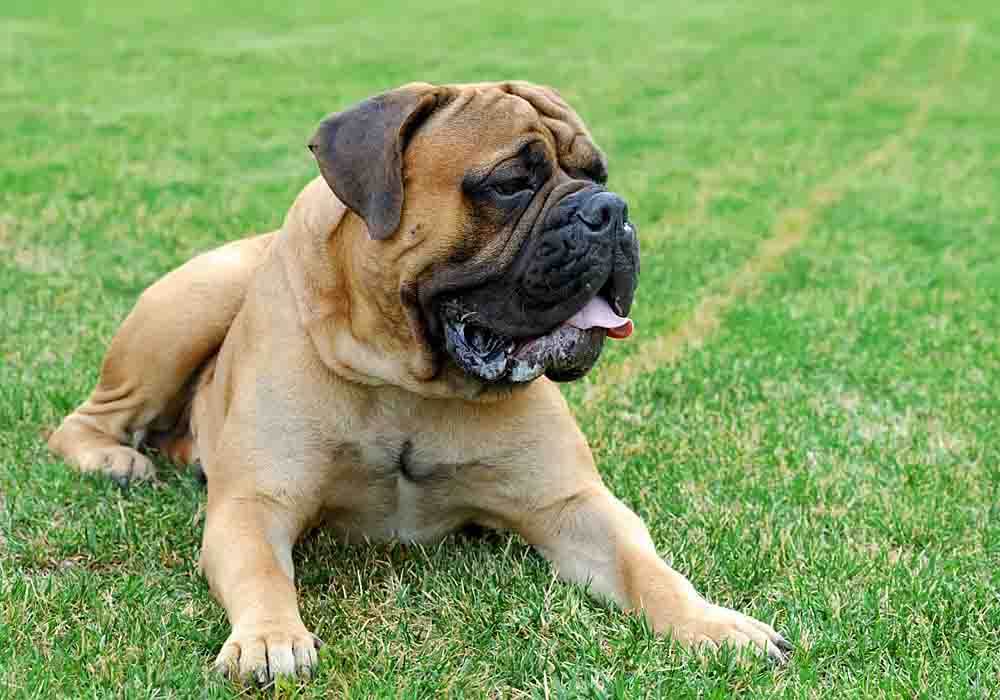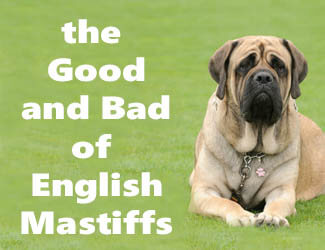Can English Mastiffs
Handle Cold or Hot Weather?
by Ken Alden
Are you contemplating on whether your Mastiff (aka Masties or Old English Mastiffs) can live outside the house because it is now fully grown and is taking up too much room? Maybe your pal can spend more time outdoors, you wonder. You're concerned, though, about how it would fare in different temperatures.
Can English Mastiffs Handle Cold Or Hot Weather?
English Mastiffs can handle cold weather but cannot tolerate extremely hot or humid weather. Present-day Mastiffs are house dogs despite their ancestors bred for outdoor battle, gladiator sports, and hunting. They thrive better when living indoors with limited periods outside for exercise.
English Mastiffs, the prototype in the larger Mastiff family of canines, have evolved into totally different animals from their ancient counterparts, especially concerning their ability to exist comfortably outdoors. Read on to find out if they can sustain themselves in various climates. Read More Below...
Pro-tip: Ever try lifting an English Mastiff? Their weight can hurt not only your back but their joints when they hop down from cars, sofas or even your bed. To protect your back and theirs check out the best Mastiff ramps on Amazon.com now.

Can English Mastiffs Live Outdoors?
No. Despite being robust and powerfully built, Mastiffs are not meant for a full-time existence outdoors. Studies have shown that prolonged outdoor living adversely affects dogs' psychological and physical health, including Mastiffs. Effects include behavior issues, such as emotional unpredictability and increased aggression.
Researchers claim that Mastiffs' incredibly sensitive nature makes them easily offended and contributes to their photographic memories. Imagine what will happen if these stem from negative experiences?
As Mastiffs are part of a social breed, they should not be left alone for a long time. They need to be with people or at least other pets. They also require the usual indoor comforts, like soft beds and clean feeding areas.
If you plan to allow your Mastiffs outside the house for extended periods, build or buy them dog houses (preferably insulated). Fence in your garden/yard because, though Mastiffs are unlikely to stray, they are territorial creatures.
You can let Mastiffs roam in the yard/garden/farm for a few hours, but vets advise against extended exposure to the elements. While they are outside without supervision, setting up safety measures like CCTV or a visual baby monitor might be a good idea to consider.
Pro-tip: English Mastiff anxiety, aggression, destructive chewing, jumping up, fearfulness, and other behaviors can be controlled with the right training program.
Here’s a great course that
addresses these issues along with many other dog training basics: Check it out now!
Can English Mastiffs Handle Cold Weather?
English Mastiffs, like other large breeds, have a higher tolerance for cold weather conditions. Tibetan Mastiffs are (traditionally) used to sub-zero temperatures. Many Mastiff pet parents from colder states say their dogs love playing in the snow. Regardless of breed, though, dogs' tolerance to weather conditions depends on where they lived the longest, especially during the first few years of life.
If you intend to let your dogs out in temperatures of 42 °F (5.56 °C) or lower, supervise them. They can be left unsupervised in temperatures 44-60 °F (6.67-15.56 °C) but only for a short time.
Symptoms of Canine Hypothermia
Extensive exposure to extremely cold temperatures can lead to hypothermia even in dogs bred for cold climates. This happens when their bodies cannot maintain a normal temperature.
Symptoms include:
- Breathing difficulty
- Weakness
- Persistent shivering
- Lack of energy
- Mental confusion
- A slow or faint heartbeat
- Frostbite
How to Treat Canine Hypothermia
Bring the dogs indoors pronto! Wrap them in warm towels or blankets (or hot water bottles or heating pads) until their temperature returns to normal, between 101 and 102.5 °F (38.33 and 39.17 °C). Get them to the veterinary ER if this drops below 98 °F (36.67 °C). Even after recovery, a checkup is a good idea to ensure no hidden damage has occurred.
English Mastiff Heat Tolerance
Their being part of a brachycephalic breed (flat-faced and pug-nosed) makes English Mastiffs genetically predisposed to low tolerance for hot or humid weather conditions. Their facial anatomy restricts their ability to pant efficiently, so they cannot process air as effectively as other breeds.
Also, their massive size is a factor in their susceptibility to rapid overheating and low endurance. So they must not stay outdoors during the summer for long periods. On outdoor walks/exercise or garden roams at 70-78 °F (21.11-25.56 °C), supervise your dogs. Exposure to temperatures above this can be life-threatening.
Some Symptoms of Canine Heat Stroke
- Excessive panting
- More drooling than usual
- Unsteady gait
- Passing out
- Pale, purplish, or exceptionally reddish gums due to oxygen deficiency
Some Causes of Canine Heat Stroke
- High fever
- Convulsions
- A past occurrence of heat stroke
- Vigorous exercise in hot weather
- Extended time spent on asphalt or concrete
- Extensive sun exposure
- Heat exposure in obesity and/or old age
- Dehydration (lack of both water and electrolytes)
- Dry mouth, thick saliva
- Sunken eyes
- Exhibition of shock
- Fainting or collapsing
- Skin does not bounce back when stretched
Pro-tip: English Mastiff's (and their owners) love dog crates…and for good reasons. Crates keep dogs from mischief while you're away, are perfect for house training, for traveling by car, and provide the dog a place to de-stress. Check out the best Mastiff crates on Amazon.com now.
How to Treat Canine Heat Stroke
Here are steps for cooling down Mastiffs suffering from heat exhaustion:
- Bring them indoors or in the shade.
- Drench them with lukewarm water. Very cold water prevents blood vessels from redirecting blood back to the body.
- Use an air conditioner or electric fan to speed up the cooling process.
- Give them time to breathe normally, so don't force them to drink fluids until they're ready.
Preventive Measures Against Heat Stroke and Dehydration
- If you want to let your Mastiffs out in the summer, ensure that temperatures are from 44 to 78 °F (6.67 to 25.56 °C). Any hotter than that, and your dogs are at risk of overheating, dehydration, or heat stroke.
- Even in mild temperatures, never leave Mastiffs alone in vehicles. It doesn't matter if the window is partially open. It only takes 20 minutes to half an hour for any dog to die from heat exhaustion.
- Make sure they have sufficient water and shade when outdoors.
- In very hot weather, limit outdoor exercise and recreation time to early morning or evening.
- Install fans outside, if necessary.
- If you have room, leave out inflatable pools filled with cool water for your dogs to wade in.
- If you lack space, turn on the water sprinklers in your garden for a quick shower.
Can English Mastiffs Handle Cold Or Hot Weather?...Final Thoughts
No matter what the breed, no two dogs are alike. Some Mastiffs love icy conditions, while others prefer indoor warmth during winter. Some love to frolic in warm weather but cannot handle the heat. The size, heft, and intimidating appearance of Mastiffs can be deceiving. They are extraordinarily sensitive to habitat and climate change, which makes them vulnerable to multiple aspects of their environment.
So get to know your Mastiffs well. Tailor your warming or cooling techniques to their needs. Common sense, astute observation, and timely action go a long way to ensuring your pets' enjoyment in any weather.
Return to the top of this Can English Mastiffs Handle Cold Or Hot Weather page

About the Author...
Ken Alden, a dedicated Mastiff owner for over eight years, is acclaimed for his expertise in care, grooming, and training. Read more About Me and my dog Shadow.
- Mastiff Guide Home ›
- English Mastiffs ›
- Can English Mastiffs Handle Cold or Hot Weather






